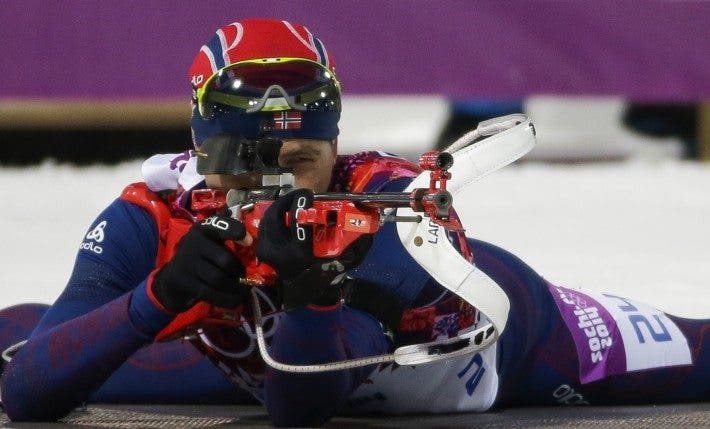Biathlon is a sport that combines cross-country skiing in free technique with shooting with a 22mm carbine. Competitions can last from 25 minutes to almost an hour. Athletes perform three laps with two series of shots or five laps with four series of shots. In competition, athletes always shoot both prone and standing. They have 5 shots to take down 5 targets with each shot. The targets are located 50 meters away. The target is 4.5cm in diameter in the prone shot and 11.5cm in the standing shot. For a missed shot, athletes receive a lap of a penalty or 1 minute added to their ski time, depending on the type of competition.
Similar to cross-country skiing but not quite
This modality has the same physiological demands as cross-country skiing, except when we talk about the classic technique. Athletes who practice this sport have other physiological and psychological demands in relation to shooting. During competitions they reach an average heart rate of 90% of their maximum. As you approach the firing range your heart rate drops to 85-87% of maximum over a period of 50-60 seconds. During the standing shot the heart rate drops to a minimum of approximately 70% of the maximum during the shot. The shooting part in biathlon is a complex task that requires good stability and precision as well as it must be done as quickly as possible to spend the least time in this stage of the competition.
Shooting a very difficult task

Biathletes shoot with an elevated heart rate that makes it difficult for them to remain motionless at the time of the shot. Due to the high heart rate and fatigue, some biathletes use a technique that consists of starting to aim off the target and then move towards it and when they can visualize the target they try to hit it. An elevated heart rate in this process has been shown to highly influence accuracy. Stability in the position adopted to take the shots can be another determining factor in achieving more or less hits.
Stability as well said is important for shooting performance in biathlon and the biathletes with the best number of hits have a stable reference pattern. Stability is affected by fatigue and decreases with increasing intensity during the course of the test.
Balance is important in shooting; biathletes should avoid excessive body movement during the shot. Specifically, the role of postural balance has been shown to be important for shooting performance; therefore, additional balance training programs can be used in shooting training to help beginners improve their performance.
Other factors such as wind, light, temperature, weather (eg snowing, cloudy, raining, etc.), shooting range conditions, as well as the type of snow in which the biathletes will perform the test can modify the number of hits that they achieve during a biathlon competition.
This is why this modality is so attractive to see and spectacular, the athletes who perform this type of tests play with suffering and their psychological capacity to be able to keep their nerves stable to hit the largest number of shots in a very unusual situation for a professional shooter.
References
- Baca A, Kornfeind P. Stability analysis of motion patterns in biathlon shooting. Human Movement Science (2010), doi: 10.1016 / j.humov.2010.05.008.
- Enoka, RM & Duchateau, J. Muscle Fatigue: What, why and how it influences muscle function. 2008. Journal Physiology 586 (1): p.11-23.
- Enoka R, Stuart DG Neurobiology of muscle fatigue. Journal of Applied Physiology, 1992: Vol. 72 Issue 5. p. 1631-1648.
- Hoffman MD, Gilson PM, Westenburg TM, Spencer WA Biathlon shooting performance after exercise of different intensities. International Journal of Sports Medicine 1992: Vol. 13 Issue 3. p. 270-273.
